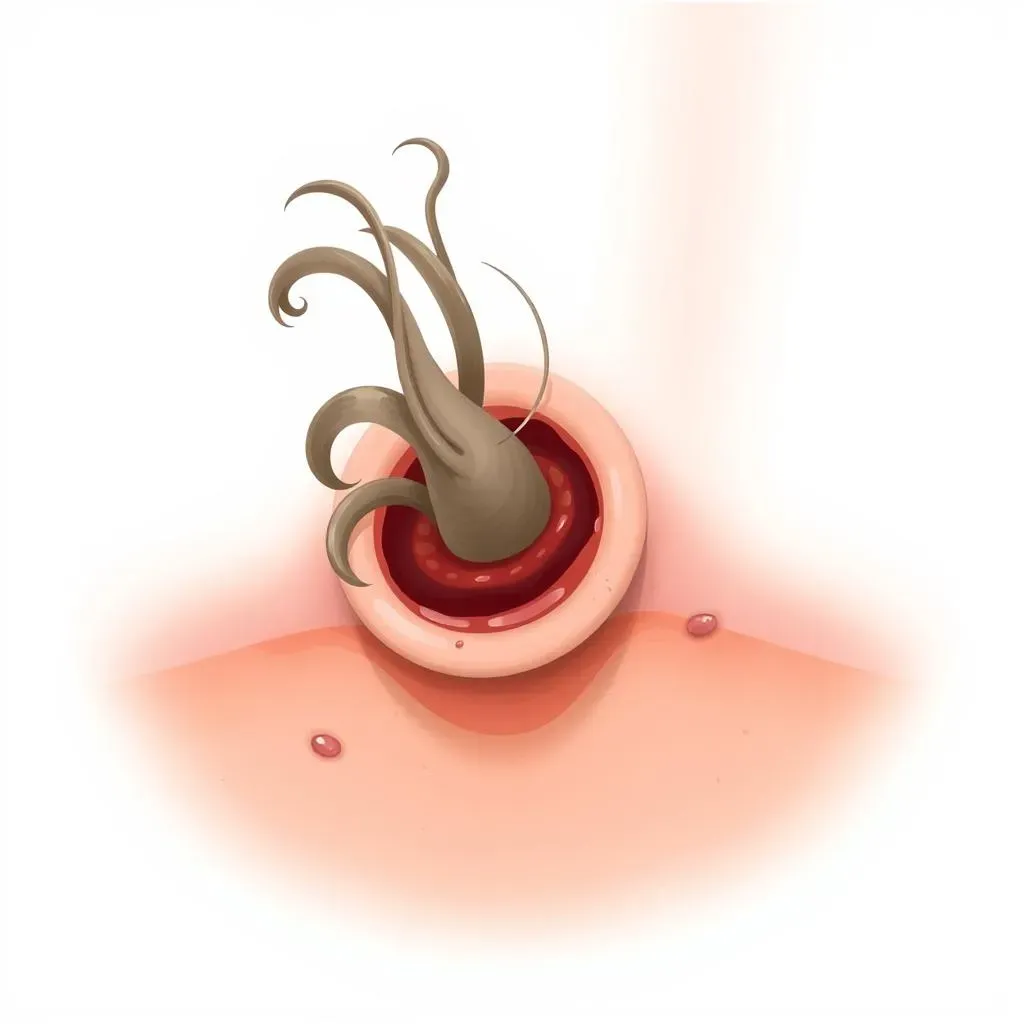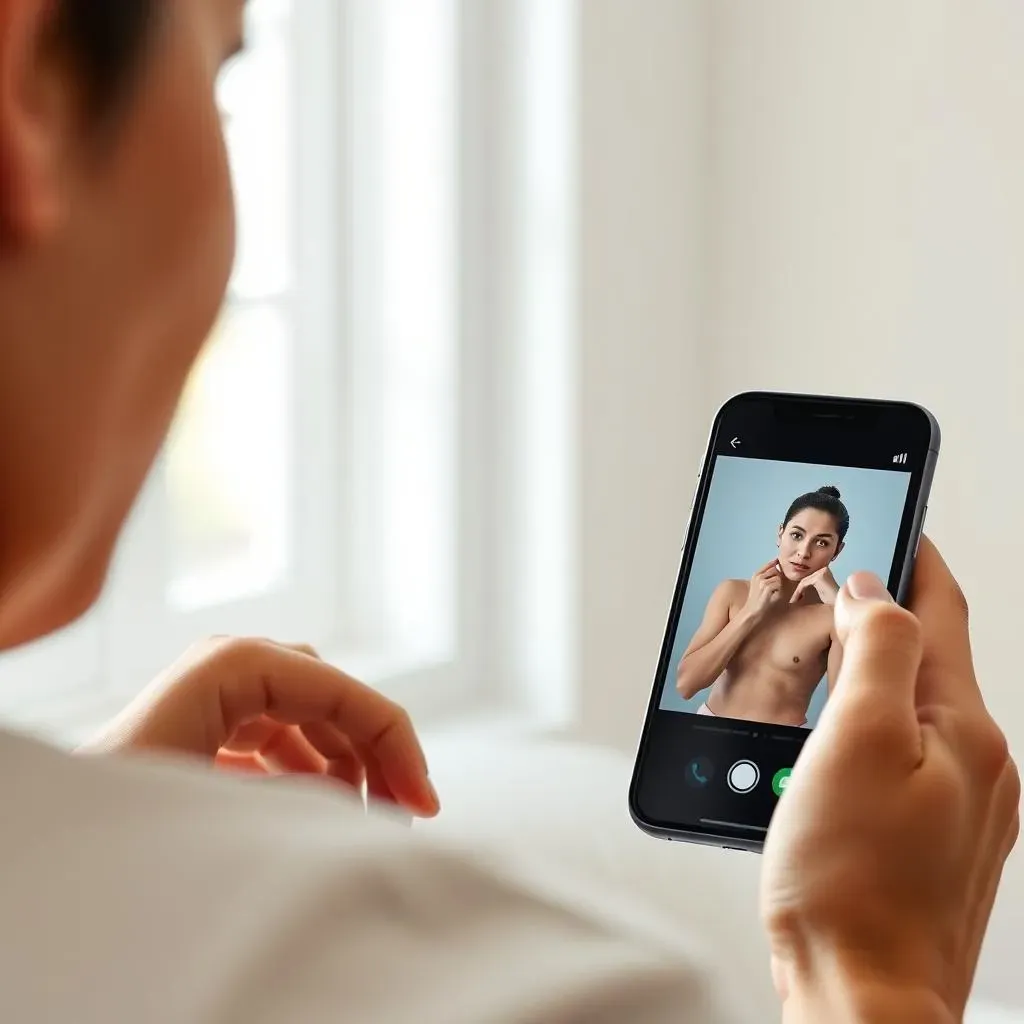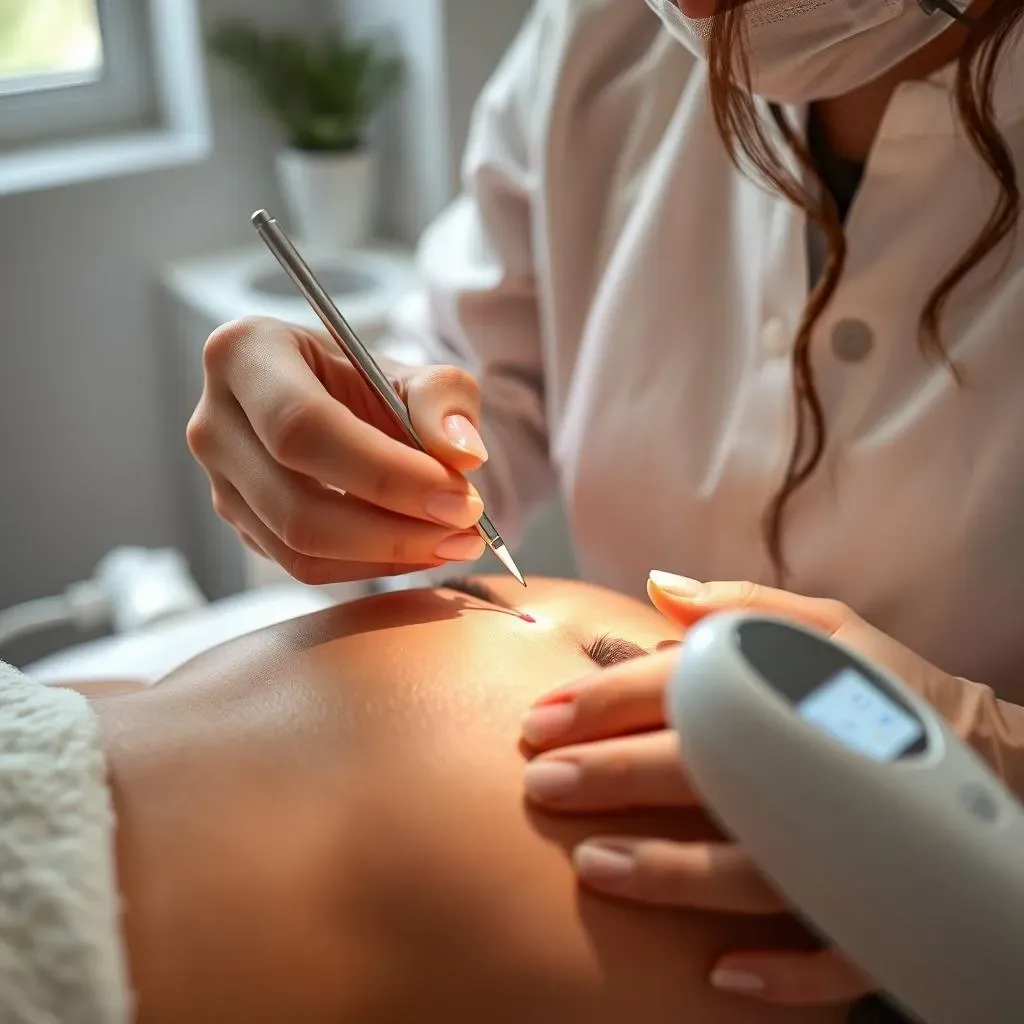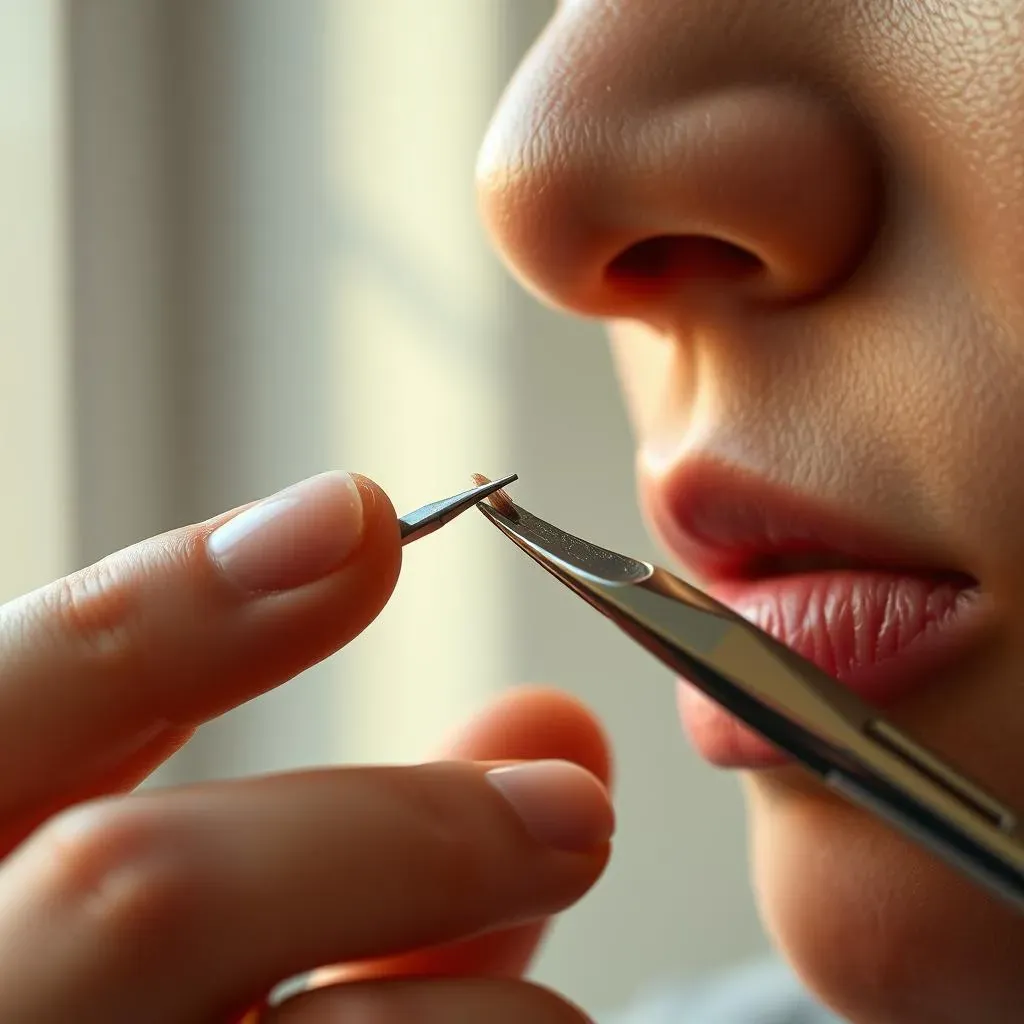Table of Contents
Ingrown hairs can be a frustrating and painful problem for many of us. Whether you're dealing with razor bumps, redness, or ingrown hairs after waxing or shaving, it's essential to know how to remove them safely and effectively. With the rise of online tutorials and videos, it's easier than ever to find guidance on ingrown hair removal. In this article, we'll delve into the world of removal of ingrown hair videos, exploring what they entail, their benefits, and the various methods you can try at home or with professional help. From DIY techniques to laser treatment, we'll cover it all. So, if you're tired of dealing with ingrown hairs and want to achieve smooth, healthy-looking skin, keep reading to learn more about the removal of ingrown hair videos and how they can help you.
What are Ingrown Hairs and How Do They Form?

What are Ingrown Hairs and How Do They Form?
Understanding Ingrown Hairs
Ingrown hairs occur when hair curls back into the skin instead of growing outwards, causing inflammation, redness, and sometimes infection. This can happen after shaving, waxing, or tweezing, especially in areas with curly or coarse hair. The most common places for ingrown hairs to appear are the face, neck, armpits, bikini line, and legs.
Ingrown hairs can be painful and may lead to scarring if left untreated. It's essential to address them promptly to prevent further complications. But before we dive into removal methods, it's crucial to understand how ingrown hairs form and what factors contribute to their development.
Risk Factors and Prevention
Certain factors increase the likelihood of getting ingrown hairs. These include:
- Genetics: Individuals with curly or coarse hair are more prone to ingrown hairs.
- Improper shaving techniques: Shaving too closely, using dull razors, or shaving against the grain can cause hair to curl back into the skin.
- Tight clothing: Friction from tight clothing can cause hair to grow back into the skin.
- Poor skincare: Not exfoliating or using harsh products can lead to clogged pores and increase the risk of ingrown hairs.
To prevent ingrown hairs, it's recommended to exfoliate regularly, use gentle skincare products, and shave in the direction of hair growth. Wearing loose clothing and maintaining good hygiene can also help reduce the risk.
Identifying Ingrown Hairs
Ingrown hairs can manifest in different ways, including:
Symptom | Description | Treatment |
|---|---|---|
Razor Bumps | Small, pus-filled bumps that appear after shaving | Apply warm compresses, use topical creams |
Redness and Inflammation | Skin becomes red, swollen, and painful | Use anti-inflammatory creams, avoid picking or scratching |
Infected Ingrown Hairs | Pus, increased redness, and possibly fever | Seek medical attention, may require antibiotics |
Early detection and treatment are key to preventing ingrown hairs from becoming severe. If you're experiencing persistent or severe symptoms, consult a dermatologist for professional advice.
Removal of Ingrown Hair Videos: What to Expect and Benefits

Removal of Ingrown Hair Videos: What to Expect and Benefits
Introduction to Ingrown Hair Removal Videos
Ingrown hair removal videos have become increasingly popular on platforms like YouTube and social media. These videos provide step-by-step guides on how to safely remove ingrown hairs at home or demonstrate professional treatments. They offer a valuable resource for those seeking to address ingrown hairs without consulting a dermatologist. By watching these videos, individuals can learn various techniques, understand the importance of proper aftercare, and gain confidence in managing their ingrown hair issues.
Many of these videos feature dermatologists, estheticians, or skincare experts sharing their knowledge and expertise. They cover topics such as how to prepare the skin, the best tools to use, and how to extract the ingrown hair without causing further irritation. Some videos also focus on prevention methods, highlighting the importance of exfoliation, moisturizing, and avoiding tight clothing.
Video Type | Description | Benefits |
|---|---|---|
DIY Tutorials | Step-by-step guides for at-home removal | Cost-effective, convenient, empowers individuals to take control of their skincare |
Professional Demonstrations | Demonstrations by skincare professionals | Provides insight into professional techniques, helps individuals understand when to seek professional help |
Product Reviews | Reviews of products used for ingrown hair removal | Helps individuals choose the most effective products for their skin type |
Benefits of Watching Ingrown Hair Removal Videos
Watching ingrown hair removal videos can be incredibly beneficial for those struggling with ingrown hairs. These videos offer a visual guide, making it easier to understand the removal process. They also provide tips on how to reduce inflammation, promote healing, and prevent future ingrown hairs. Furthermore, the videos often feature before-and-after footage, which can be motivating and help viewers see the potential results of proper removal techniques.
Another significant advantage of these videos is the sense of community they provide. Many viewers share their own experiences and tips in the comments section, creating a supportive environment where individuals can ask questions and learn from one another. This communal aspect can be especially helpful for those who feel embarrassed or isolated by their ingrown hair issues.
- Learn proper removal techniques to avoid further irritation
- Understand how to care for the skin after removal to promote healing
- Discover products and tools recommended by skincare professionals
- Connect with others who have similar experiences and gain support
What to Expect from Ingrown Hair Removal Videos
When watching ingrown hair removal videos, it's essential to have realistic expectations. While these videos can be highly informative and helpful, they should not replace professional medical advice. If you're dealing with severe or persistent ingrown hairs, it's crucial to consult a dermatologist. They can provide personalized guidance and treat any underlying conditions that may be contributing to the ingrown hairs.
Additionally, not all videos are created equal. It's vital to choose videos from reputable sources, such as licensed dermatologists or estheticians. Be wary of videos that promote unrealistic or dangerous removal methods, as they can cause more harm than good. By being discerning and seeking out high-quality content, viewers can maximize the benefits of ingrown hair removal videos and achieve the smooth, healthy skin they desire.
DIY Ingrown Hair Removal Methods and Precautions

DIY Ingrown Hair Removal Methods and Precautions
DIY Ingrown Hair Removal Methods
For those who prefer to take matters into their own hands, there are several DIY methods for removing ingrown hairs. However, it's essential to approach these methods with caution to avoid causing further irritation or infection. Before attempting any DIY removal, make sure to clean and disinfect the area to prevent infection.
One common method is using a warm compress to soften the skin and bring the ingrown hair to the surface. Soak a washcloth in warm water, apply it to the affected area for 5-10 minutes, and then gently exfoliate with a gentle scrub or a chemical exfoliant containing alpha-hydroxy acids (AHAs) or beta-hydroxy acids (BHAs).
Method | Description | Risks and Precautions |
|---|---|---|
Warm Compress | Softens skin, brings hair to surface | Avoid using water that's too hot, which can burn the skin |
Exfoliation | Removes dead skin cells, helps hair grow outwards | Be gentle to avoid further irritation; use chemical exfoliants with caution |
Depilatory Creams | Dissolves hair at the surface of the skin | Can cause chemical burns if not used correctly; follow instructions carefully |
Another method involves using tweezers to gently pull out the ingrown hair. However, this should be done with extreme caution, as tweezing can push the hair further into the skin, making the situation worse. It's recommended to numb the area with a topical anesthetic cream before attempting to tweez.
- Always clean and disinfect the tweezers before use
- Pull the hair in the direction of growth, not against it
- Avoid Tweezing if the ingrown hair is deeply embedded or infected
Some individuals also use ingrown hair removal creams or serums that contain ingredients like salicylic acid or tea tree oil. These products can help dissolve the hair and reduce inflammation. However, it's crucial to follow the product instructions and perform a patch test to ensure you're not allergic to any ingredients.
Precautions and Safety Measures
While DIY methods can be effective, it's vital to take necessary precautions to avoid complications. Here are some safety measures to keep in mind:
1. Avoid sharing personal care items like tweezers, razors, or creams to prevent the spread of infection.
2. Practice good hygiene by washing your hands before touching the affected area and cleaning any tools used for removal.
3. Be gentle when exfoliating or removing the hair to prevent pushing it further into the skin.
4. Monitor your skin for signs of infection, such as increased redness, swelling, or pus, and seek medical attention if symptoms persist or worsen.
5. Consult a dermatologist if you're unsure about the best removal method or if the ingrown hair is severe.
Professional Ingrown Hair Removal: Laser Treatment and More

Professional Ingrown Hair Removal: Laser Treatment and More
Laser Hair Removal for Ingrown Hairs
Laser hair removal is a popular professional treatment for ingrown hairs, especially for individuals with curly or coarse hair. This method uses a laser to target and destroy the hair follicle, reducing the likelihood of future ingrown hairs. Laser treatment is particularly effective for areas like the bikini line, underarms, and face, where ingrown hairs tend to occur frequently.
The process involves a series of sessions, typically spaced 4-6 weeks apart, to catch all hairs in their growth cycle. Each session can last from a few minutes to an hour, depending on the area being treated. While laser hair removal is considered permanent, maintenance sessions may be necessary to achieve optimal results.
Benefits | Description | Results |
|---|---|---|
Permanent Hair Reduction | Significant reduction in hair growth | Smooth skin for extended periods |
Minimized Ingrown Hairs | Reduced risk of ingrown hairs due to decreased hair growth | Less irritation and inflammation |
Long-Term Cost Savings | Reduces need for frequent shaving, waxing, and depilatory creams | Cost-effective in the long run |
Other Professional Removal Methods
Beyond laser treatment, there are other professional methods for removing ingrown hairs. These include electrolysis, a permanent hair removal method that uses a fine needle to destroy the hair follicle, and IPL (Intense Pulsed Light) therapy, which targets the hair follicle with broad-spectrum light.
For severe cases of ingrown hairs, a dermatologist may recommend minor surgery to remove the hair and any infected tissue. This is typically performed under local anesthesia and may require stitches. After the procedure, it's essential to follow the dermatologist's aftercare instructions to promote healing and prevent infection.
- Electrolysis: Suitable for small areas, permanent results
- IPL Therapy: Effective for larger areas, requires multiple sessions
- Minor Surgery: Reserved for severe cases, provides immediate relief
Post-Removal Care and Maintenance
After professional ingrown hair removal, it's crucial to follow a skincare routine that promotes healing and prevents future ingrown hairs. This includes keeping the treated area clean, applying topical creams or serums as directed, and avoiding tight clothing that may irritate the skin.
Exfoliation is also key, but it should be done gently to avoid irritating the skin. Chemical exfoliants containing AHAs or BHAs can help remove dead skin cells and promote hair growth in the correct direction. Moisturizing regularly keeps the skin hydrated and reduces the risk of ingrown hairs.
Conclusion
Removing ingrown hairs requires patience, the right techniques, and sometimes professional help. By exploring removal of ingrown hair videos, you can gain valuable insights and tips to tackle this common issue. Whether you opt for DIY methods or professional treatments like those offered by hairawaybylaser.com, remember that prevention is key. By adopting good grooming habits, exfoliating regularly, and using the right products, you can reduce the occurrence of ingrown hairs and maintain smooth, healthy skin. So, take the first step towards ingrown hair-free skin and start exploring the world of removal of ingrown hair videos today.
